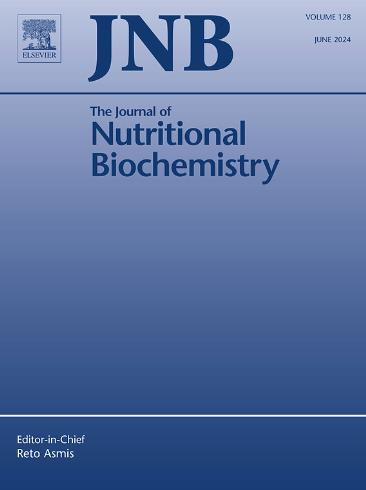Mechanisms of astragalus polysaccharide alleviated experimental colitis involved mTreg cells and the mTOR/HIF-1α pathway
IF 4.9
2区 医学
Q1 BIOCHEMISTRY & MOLECULAR BIOLOGY
引用次数: 0
Abstract
To investigate the effect of astragalus polysaccharide (APS) in the treatment of ulcerative colitis (UC) and its molecular mechanisms, particularly through the ability to regulate Treg cell-glycolytic interactions. BALB/c mice were used to establish DSS-induced UC model, and administered with APS (200 mg/kg) as a therapeutic intervention. During the study, flow cytometry was employed to analyze the changes in the proportions of Treg cells and their related subpopulations in the spleens of mice. Additionally, the expression levels of various cytokines in the colon tissues were detected simultaneously. To further investigate the mechanism of action of APS, RNA sequencing was also performed on the colon tissues, and the regulatory effects of APS on glycolysis and mTOR/HIF-1α signaling pathway were revealed by KEGG pathway analysis, western blot, RT-qPCR and other techniques. In this study, we found that APS not only substantially ameliorated the adverse symptoms in UC mice, but also promoted the expression of anti-inflammatory cytokines and suppressed the levels of pro-inflammatory cytokines by regulating the distribution of Treg cells and their subpopulations. Furthermore, the molecular mechanism by which APS exerts its protective effects by inhibiting glycolysis and mTOR/HIF-1α signaling pathway was revealed through RNA sequencing, KEGG pathway analysis, and other techniques. The study revealed that APS effectively ameliorated the symptoms of UC in mice by regulating Treg cells, inhibiting glycolysis and mTOR/HIF-1α signaling pathway, providing a scientific basis and potential therapeutic target for the application of APS in UC treatment.
黄芪多糖缓解实验性结肠炎的机制与mTreg细胞及mTOR/HIF-1α通路有关。
目的:探讨黄芪多糖(APS)治疗溃疡性结肠炎(UC)的作用及其分子机制,特别是通过调节Treg细胞-糖酵解相互作用的能力。材料和方法:采用BALB/c小鼠建立dss诱导UC模型,并给予黄芪多糖(200 mg/kg)作为治疗干预。在研究过程中,采用流式细胞术分析小鼠脾脏中Treg细胞及其相关亚群的比例变化。同时检测结肠组织中各种细胞因子的表达水平。为了进一步研究APS的作用机制,我们还对结肠组织进行了RNA测序,通过KEGG通路分析、western blot、RT-qPCR等技术揭示了APS对糖酵解和mTOR/HIF-1α信号通路的调控作用。本研究发现,黄芪多糖不仅能显著改善UC小鼠的不良症状,还能通过调节Treg细胞及其亚群的分布,促进抗炎细胞因子的表达,抑制促炎细胞因子的水平。此外,通过RNA测序、KEGG通路分析等技术揭示了APS通过抑制糖酵解和mTOR/HIF-1α信号通路发挥保护作用的分子机制。意义:本研究揭示了黄芪多糖通过调节Treg细胞、抑制糖酵解和mTOR/HIF-1α信号通路,有效改善小鼠UC的症状,为黄芪多糖在UC治疗中的应用提供了科学依据和潜在的治疗靶点。
本文章由计算机程序翻译,如有差异,请以英文原文为准。
求助全文
约1分钟内获得全文
求助全文
来源期刊

Journal of Nutritional Biochemistry
医学-生化与分子生物学
CiteScore
9.50
自引率
3.60%
发文量
237
审稿时长
68 days
期刊介绍:
Devoted to advancements in nutritional sciences, The Journal of Nutritional Biochemistry presents experimental nutrition research as it relates to: biochemistry, molecular biology, toxicology, or physiology.
Rigorous reviews by an international editorial board of distinguished scientists ensure publication of the most current and key research being conducted in nutrition at the cellular, animal and human level. In addition to its monthly features of critical reviews and research articles, The Journal of Nutritional Biochemistry also periodically publishes emerging issues, experimental methods, and other types of articles.
 求助内容:
求助内容: 应助结果提醒方式:
应助结果提醒方式:


